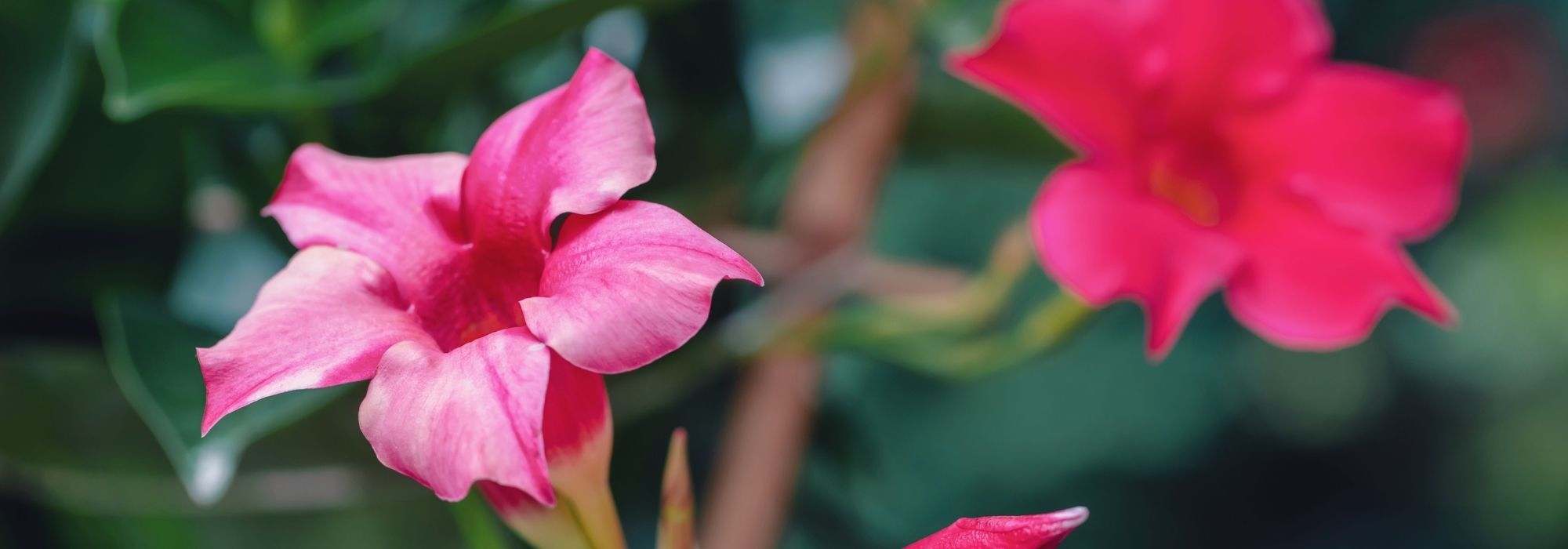
Diseases and Pests of Dipladenia
Identify and address them naturally.
Contents
Despite their resilience, Dipladenias are frequently affected by attacks from aphids, mealybugs, and red spider mites. Regarding diseases, grey mould can also cause damage and deprive us of the beautiful flowers of the Dipladenia. Discover the main pests and diseases, the appropriate treatments, and the preventive measures to implement to protect the Dipladenia.
Botrytis: the main disease of Dipladenia
Botrytis cinerea is a fungal disease that manifests very frequently in very humid and warm conditions (over 20°C). Its contagiousness is high, meaning that even the slightest contaminated plant debris can transmit the disease to nearby plants through the diffusion of extremely volatile spores or mycelium. This fungus is also known as “grey mould”.
Symptoms
When a plant is affected by botrytis, brown spots first appear on the leaves, flowers, flower buds, and roots. Then, these spots are quickly covered with a grey felt that causes rot and drying out of the affected part. In the garden, this microscopic fungus generally develops in spring or autumn, but it can be present all year round on plants kept under cover. Be aware that it is very difficult to overcome this disease.
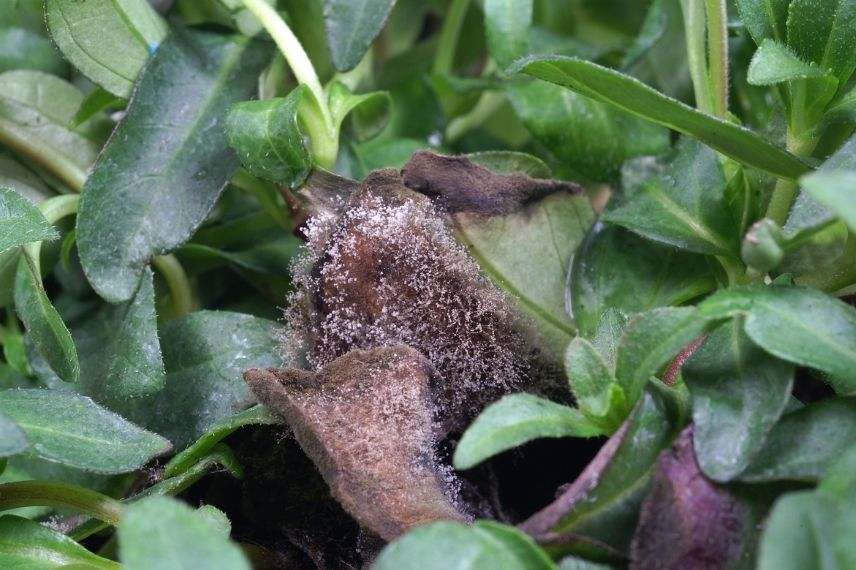
Grey mould on leaves
Natural treatments to combat botrytis on Dipladenia
Regularly observe the condition of your plant. If the first signs of the disease appear, remove the affected parts of the plants as soon as possible. Do not put these waste materials in the compost bin, as your homemade compost will then be contaminated and you will no longer be able to use it in the garden.
- Horsetail decoction
Thanks to its fungicidal properties, horsetail decoction, rich in silica, can be used preventively or curatively at the onset of contamination. Here is our recipe:
- roughly chop 100 g of fresh horsetail or use 20 g of dried horsetail
- immerse the horsetail in one litre of water (preferably rainwater)
- cover and let it steep for 24 hours
- bring to a boil and let simmer for 30 minutes
- let cool and then strain the decoction
- store it in a spray bottle (for a maximum of 15 days).
Plan to spray every two weeks. To treat your Dipladenia, dilute the decoction to 10% (1 litre of decoction for 10 litres of water). You can also replace the horsetail decoction with a garlic decoction.
As a preventive measure
Disinfect your equipment (tools, trays, pots…). When watering, avoid wetting the foliage of your Dipladenia. Place your Dipladenia in a well-ventilated area and prune it each year.
Aphid
Greenfly is often found under the leaves and at the tips of young shoots of the Dipladenia, where it lays its eggs. This sucking insect feeds on the sap. Grouped in colonies, it can be black or green. This pest thrives in dry conditions and typically infests plants at the beginning of summer.
Symptoms
An infestation of greenflies causes curling and yellowing of the leaves, as well as deformation of the shoots. The honeydew secreted by the greenflies can lead to sooty mould. A black, sticky substance appears on the plant, which then struggles to perform photosynthesis.
 Under attack from greenflies, the leaves turn yellow and curl up
Under attack from greenflies, the leaves turn yellow and curl up
Natural treatments to combat greenflies on Dipladenia
In case of a light infestation, regularly spray your plant with a strong jet of water (from a hose or sprayer) to remove the greenflies. However, the most effective (but laborious) solution is to crush the greenflies by hand.
- Black soap
Regarding treatments, sprays made from black soap are effective from the first attacks. For your soapy water, mix 15 to 30 g of black soap per litre of water.
- Pyrethrum
As this insecticidal is harmful to wildlife, use plant pyrethrum only in cases of massive greenfly attacks, preferably in the evening.
- Beneficial insects
Although potentially costly for garden treatment (large areas), we recommend introducing larvae of beneficial insects (ladybirds, lacewings) on potted Dipladenias placed in sheltered areas (conservatory, balcony, covered terrace). In the garden, to combat greenflies, promote biodiversity by attracting greenfly predators (hoverflies, birds, earwigs…). To do this, grow nectariferous plants and create shelters for wildlife (birdhouses, wood piles, pots filled with straw…).
- As a preventive measure
In organic cultivation, nettle maceration or nettle manure are used to repel greenflies. To make this repellent, soak 1 kg of fresh nettle leaves in 10 litres of water for 12 hours. For treating your Dipladenia, dilute this maceration to 10% in rainwater (1 litre of maceration for 10 litres of water).
Discover other Dipladenia
View all →Available in 1 sizes
Available in 0 sizes
Available in 2 sizes
Available in 1 sizes
Available in 2 sizes
Available in 1 sizes
Available in 1 sizes
Available in 1 sizes
Available in 1 sizes
Available in 1 sizes
Mealybug
Just like aphids, scale insects are part of the sap-sucking pests. Males are harmless to the plant. However, it is the larvae of the females that cause damage by feeding on sap. Females can be recognised by their ovate shape and white colour. These insects thrive in confined, warm, and humid conditions during the summer.
Symptoms
The laying of hundreds of eggs forms white, farinose, and sticky clusters on the leaves. The foliage of the Dipladenia turns yellow, young shoots become distorted, and the plant weakens and declines. Sticky honeydew droplets are also observed, which lead to the appearance of sooty mould, as well as brown shells where the insects hide.
 Mealybug
Mealybug
Natural treatments to combat mealybugs on Dipladenia
- Manual treatment
Remove the shells using a non-cutting blade to avoid damaging the plant. Wipe off the mealybugs with a cloth soaked in 90°C alcohol. Finally, rinse the Dipladenia with clear water.
- Spray treatment
Prepare a diluted solution in 1 litre of water with: 1 teaspoon of liquid black soap, 1 teaspoon of methylated spirits, and 1 teaspoon of vegetable oil (for example, rapeseed). Spray this mixture twice at 30-minute intervals, then repeat spraying weekly until the mealybugs are completely eradicated.
Prevention
Monitoring the health of the plants and ensuring good growing conditions in well-ventilated areas (outdoors) allow for quick intervention and reduce the risk of mealybug infestations.
Read also
10 tips to successfully grow dipladeniaRed spider mite
Among the mites that threaten dipladenia, we find the spider mite (Tetranychus urticae), commonly known as the red spider. This mite, which is difficult to see with the naked eye, thrives in very hot (30-35 °C) and humid conditions.
Symptoms
The damage caused to Dipladenia is primarily aesthetic. This mite resides and lays its eggs on the underside of the leaves, feeding on the contents of the plant cells. As the cells gradually die, yellow spots (mottling) appear on the leaves, which eventually become completely discoloured, taking on grey, yellow, or bronze hues. The growth of the Dipladenia is delayed, and the plant prematurely loses its leaves. In cases of severe infestation, fine threads of silk webbing are visible on the foliage. In extreme cases, if no action is taken, the plant may die.
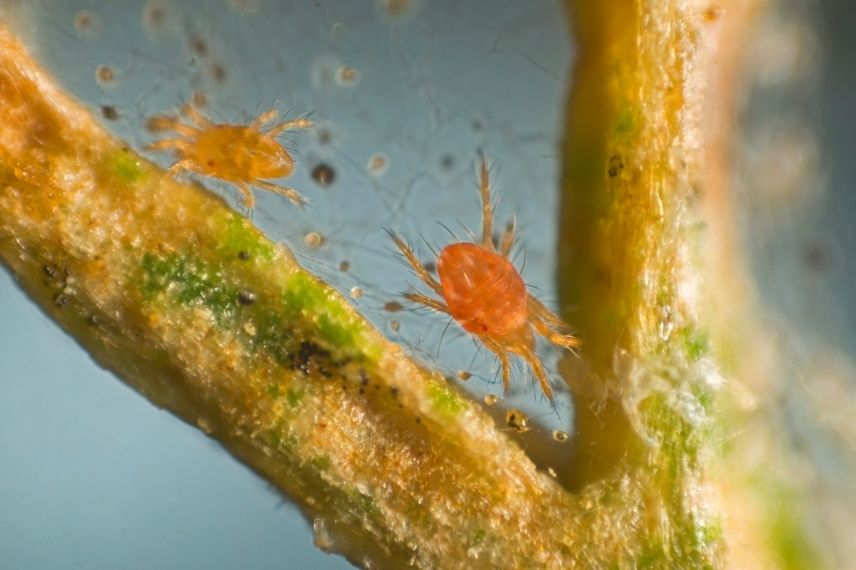
Red spider (Tetranychus urticae)
Natural treatments to combat the red spider
- Spray treatments
To combat this mite, spray a mixture composed of 20-25 drops of rosemary essential oil, 3-4 drops of black soap, 5 ml of rapeseed oil, and one litre of water.
Garlic decoction (dilution of 30 g/litre of water) yields good results when sprayed every 3 days for 15 days.
- Beneficial insects and prevention
The introduction of predatory species is also a means of combating the red spider. The mite Phytoseiulus persimilis is a natural predator that will attack and feed on Tetranychus urticae. You can also opt for lacewing larvae that feed on the eggs of the red spider.
Finally, a garden with diverse cultivation will naturally attract beneficial insects that will be good allies in combating spider mites. Encourage melliferous plants and install shelters (insect hotels, branches, piles of stones, etc.).
- As a preventive measure
To avoid weakening your plant, limit the application of nitrogen-rich fertilisers. In summer, mulch your Dipladenia to maintain moisture and mist the leaves on summer evenings, as spider mites proliferate in dry conditions. Use nettle manure or horsetail decoction to strengthen the plant.
Why are the leaves of my dipladenia turning yellow and falling off?
There can be several reasons for this:
- an excess of water or a lack of water: do not let water stagnate in the saucers, ensure that the bottom of your pot is well-drained, place a layer of clay balls at the bottom of the pot, and use a draining compost; the substrate should be moist but not waterlogged or too dry;
- a cold snap: leaves tend to yellow, avoid placing your Dipladenia in draughts;
- a change of location: during wintering, when you bring your pot indoors, the Dipladenia may lose a few leaves.
To find out more
Discover all our tips to know how to
- How to make horsetail manure?
- How to make nettle manure?
- How to prepare a garlic decoction: recipe and uses in the garden
- How to use pyrethrum in the garden
Find all the information on:
- Subscribe!
- Contents



































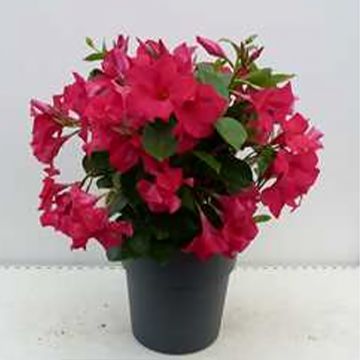
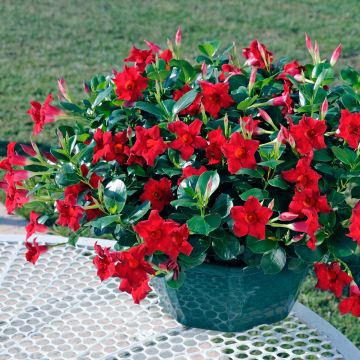
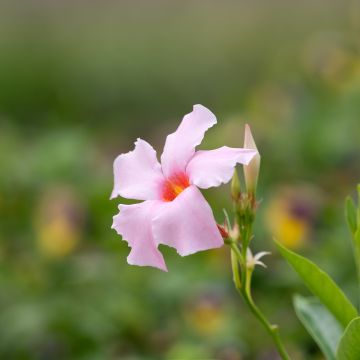
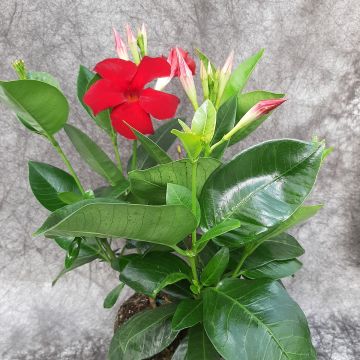
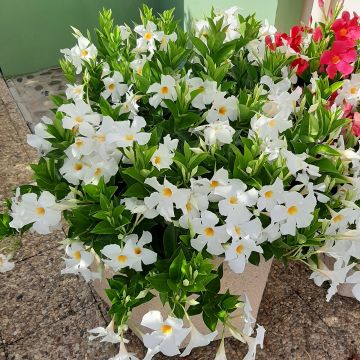
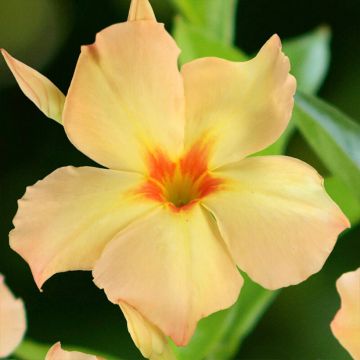
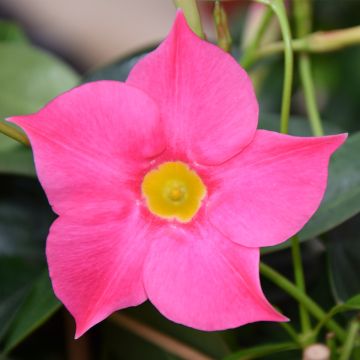
Comments